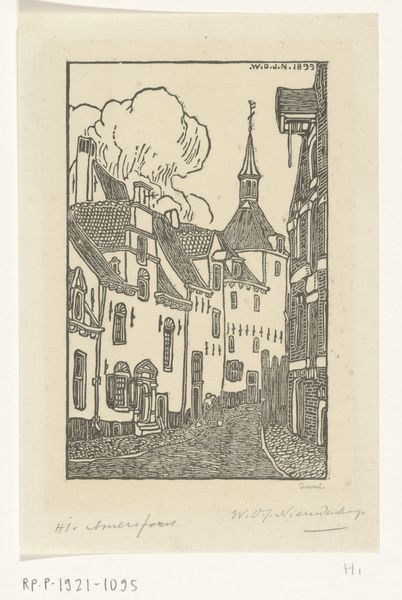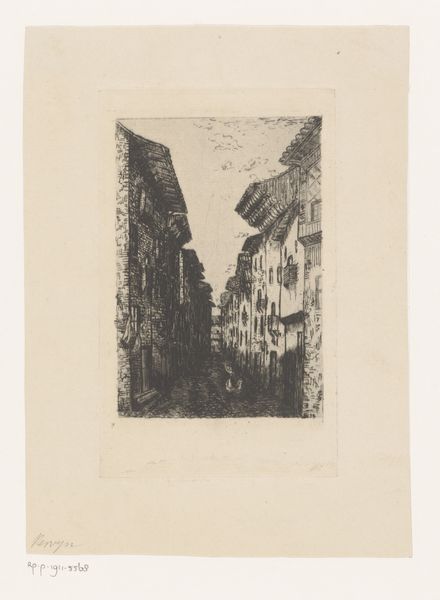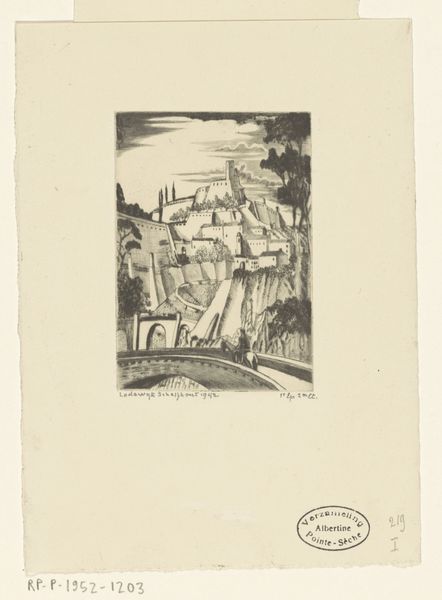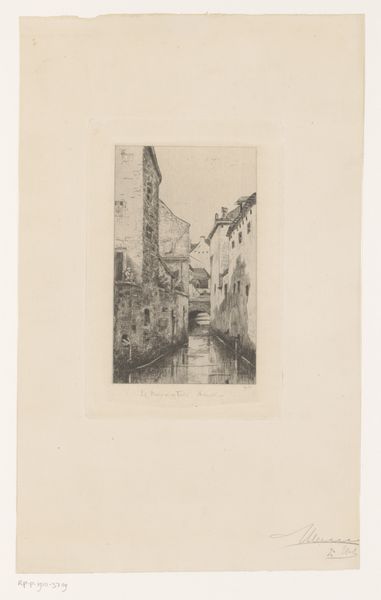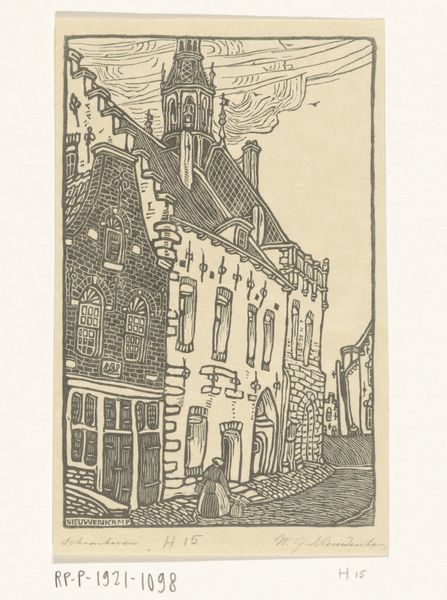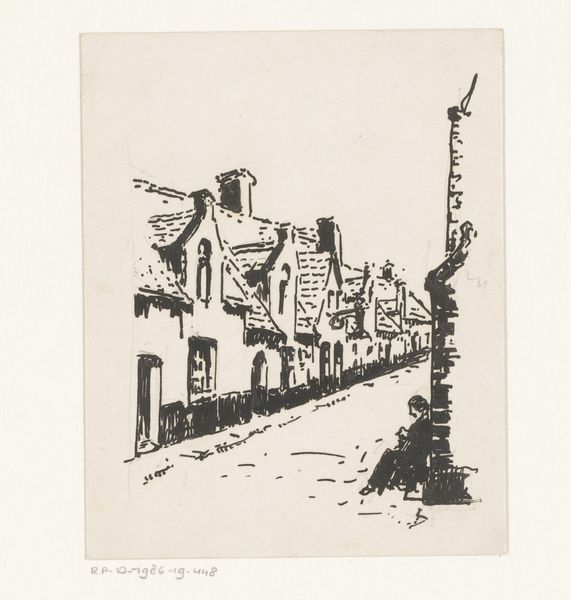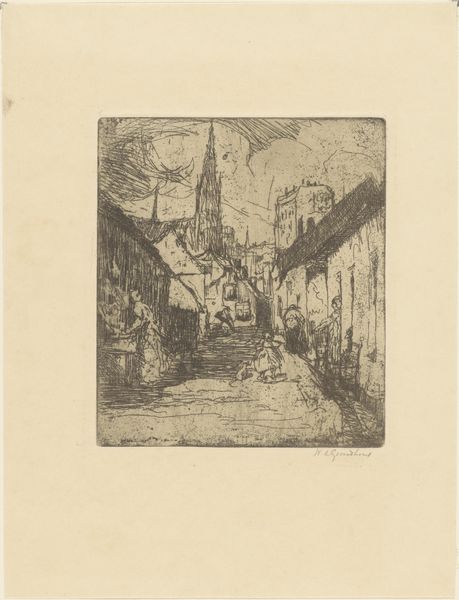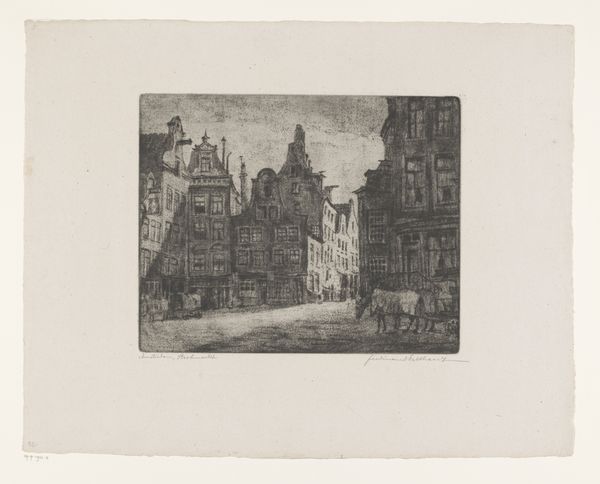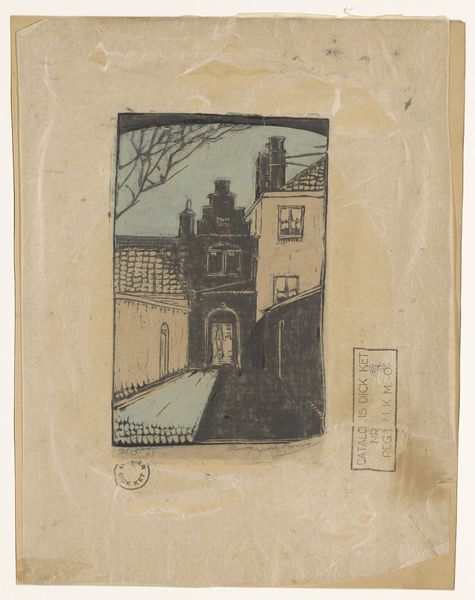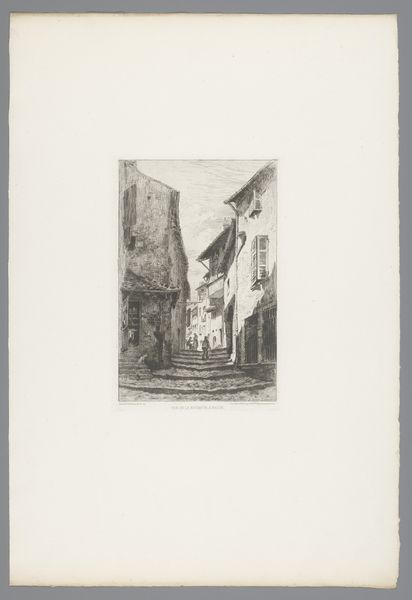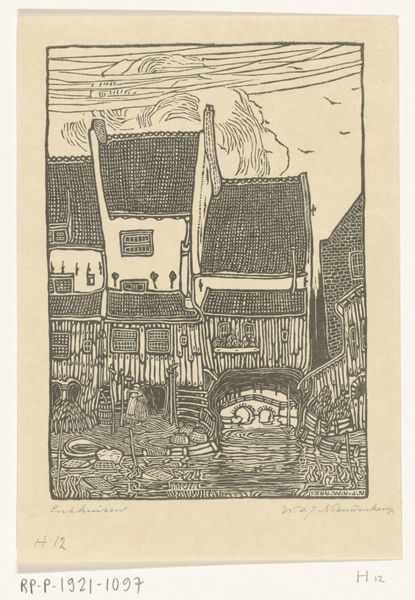
print, woodcut
# print
#
expressionism
#
woodcut
#
street
Dimensions: height 237 mm, width 190 mm
Copyright: Rijks Museum: Open Domain
Curator: Welcome. We’re looking at "Huisjes in Den Haag," or "Houses in The Hague," a 1922 woodcut print by Jacques Jeichienus Ottens. Editor: My immediate impression is one of starkness and simplification. The contrast between the blacks and whites—punctuated by these touches of red on the rooftops—creates an almost oppressive mood. Curator: That mood likely speaks to Ottens's involvement in the expressionist movement, particularly the anxieties of post-World War I Europe and its societal impacts. The print captures a Dutch street scene, yet it also seems to mirror themes of urban alienation common during this era. Editor: Note how the sharp angles and vertical lines of the houses dominate the composition. The artist’s use of contrasting planes serves to abstract, reducing the buildings to almost geometric shapes. Semiotically speaking, these structures become signifiers of the dense urban experience. Curator: The lack of human figures is notable too. Are these houses symbols of a societal abandonment, or does that make the focus more about structures and institutions themselves? Consider also the socio-economic conditions within the Netherlands at the time, the aftermath of wartime economic crises. These themes of hardship resonate in the severity of Ottens' rendering. Editor: And it is very severe; Ottens forces a flatness in perspective, almost denying depth except where suggested by converging lines in the road. Look how the limited palette concentrates attention on shape and form. The texture inherent in the woodcut technique also emphasizes a tactile quality which subtly balances out flatness, reminding us it is, first and foremost, an object. Curator: So while, as a formal object, the work's severe composition invites a rigorous decoding of form, we can't divorce it from the lived experiences embedded within its historical moment. I wonder what voices were omitted when defining expressionism within art historical narratives. Editor: It’s fascinating how your lens uncovers stories layered underneath a visually austere composition, prompting richer considerations. Curator: Precisely, and it is the dialogue between art history and critical theory that allows for an expansive interpretation of this visually striking woodcut print.
Comments
No comments
Be the first to comment and join the conversation on the ultimate creative platform.
